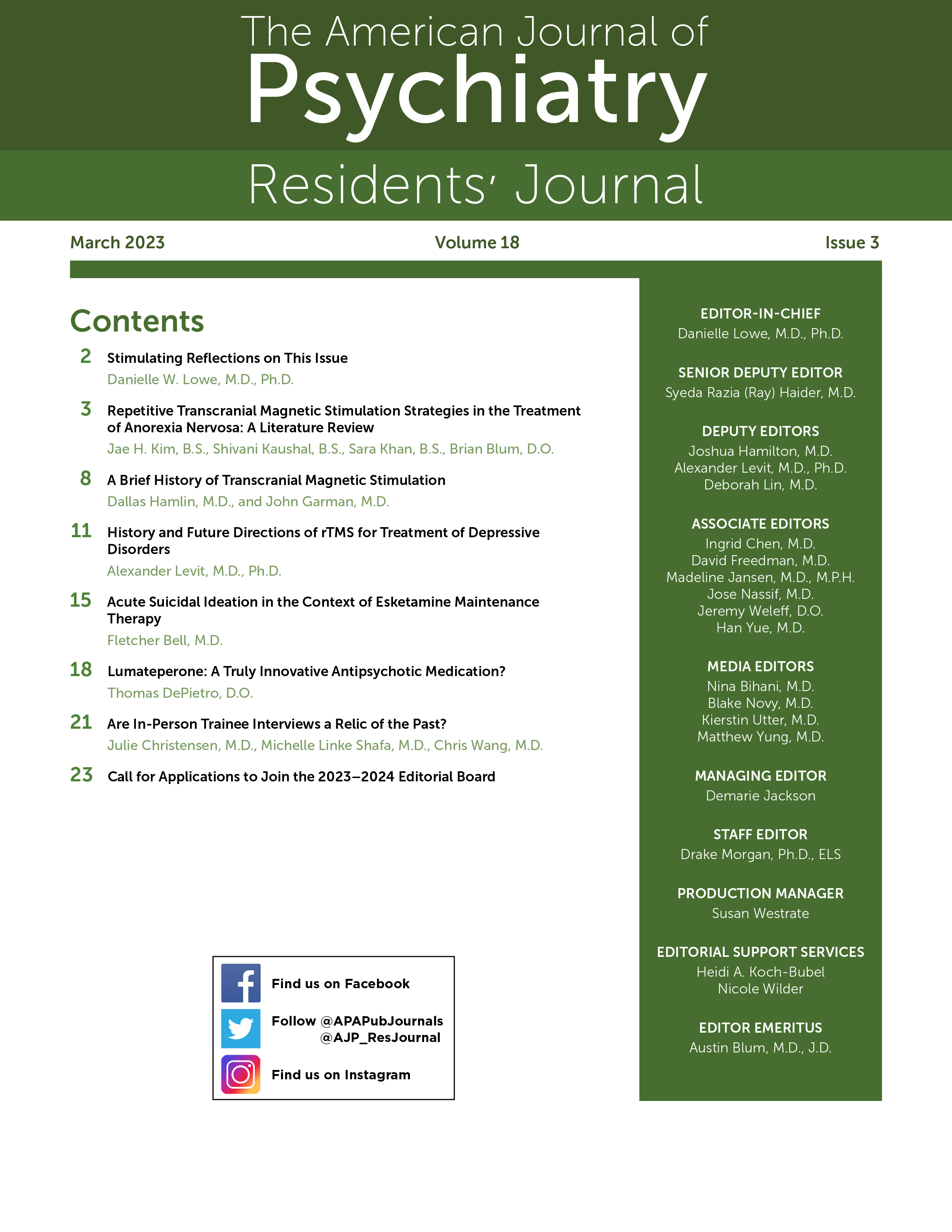Sometimes a natural theme occurs in an issue of the
American Journal of Psychiatry Residents’ Journal (
AJP-RJ), and it would be remiss not to reflect on these articles as a group. The issue starts with a literature review of repetitive transcranial magnetic stimulation (rTMS) as a treatment for anorexia nervosa by Jae H. Kim, B.S., and colleagues (
1). Although the efficacy data are limited in both number of trials and length of follow up, the possibility of integrating rTMS into a larger multidisciplinary treatment program to help reduce maladaptive processes in the frontolimbic system is appealing. This review is followed by two History of Psychiatry articles that explore the development and science of rTMS. Dallas Hamlin, M.D., and John Garman, M.D., review the roots of neurostimulation by intertwining the discoveries of electricity and magnetism within the field of psychiatry (
2). Alexander Levit, M.D., Ph.D., builds on this foundation, discussing some of the technical details of current and emerging protocols (
3). Together, these articles help integrate the reader’s understanding of the fundamentals and potential future directions of rTMS, and I hope you enjoy reading them, as I have.
It is also exciting that this issue of the
AJP-RJ is being released just a few days before the conclusion of our third virtual residency and fellowship match cycles. I encourage you to read Chris Wang, M.D., and colleagues’ discussion of the limitations and benefits of a virtual match from the perspective of having both types of interviews at different stages of professional training (
4). Continued dialogue about how to balance equity and affordability while having a meaningful interview experience is critical. We know even less about the effects of the virtual match on well-being and burnout throughout training. Trainee burnout is not a new topic, and the Accreditation Council for Graduate Medical Education common program requirements include the assessment of and support for well-being (
5,
6). However, with only two classes of virtually matched trainees matriculated to date, the longer-term effects of virtual interviews on program satisfaction and burnout are yet to be fully realized. How do virtual interviews contribute to the sense of lack of control during training? What effects did in-person interview dinners and applicant interactions have on trainees in the program? What additional burdens do virtual interviews have on trainees? The authors concluded that a curated group of trainees and faculty could provide enough information about an institution and community’s culture for the interviewee’s match list—but how virtual interviews change the larger residency and fellowship experience remains relatively unknown.
